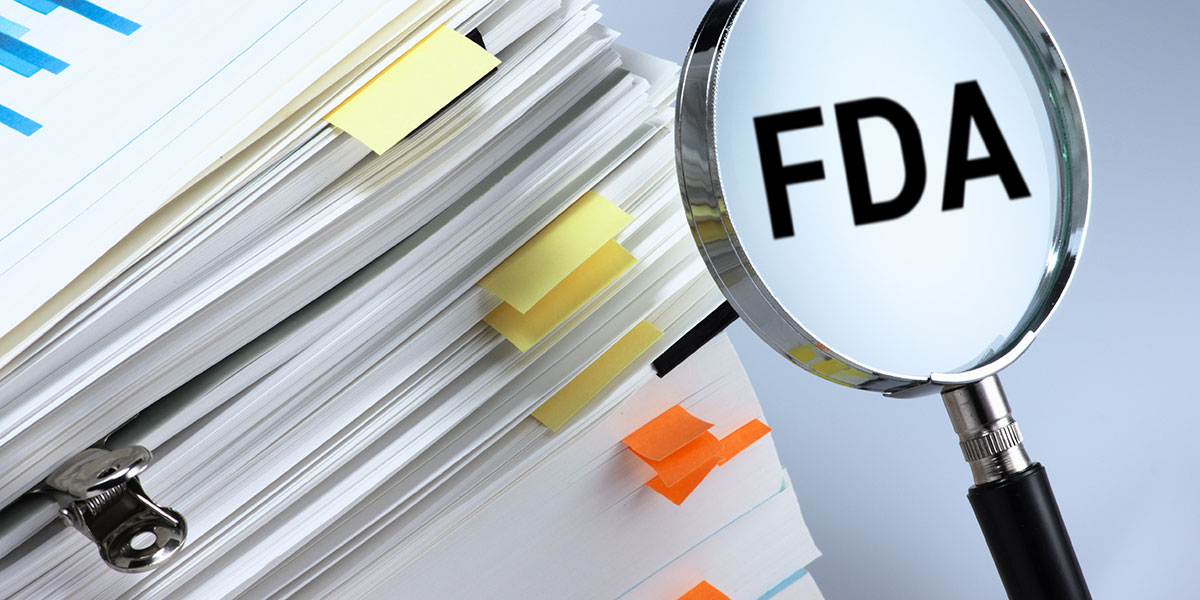Author: Amber Hilfiger, Director of Operations and Principal Quality Engineering Consultant
No one wants an FDA investigator to find an issue with their medical device. If you’re a medical device manufacturer you have either experienced an FDA inspection at your facility or will in the future. While they can be stressful, the proper guidance from a team of FDA consulting experts can help your company get through the process unscathed.
United States Food and Drug Administration sets and oversees the rules and regulations of various industries within the United States, including the medical device industry.
The FDA’s scope of authority includes ensuring medical devices meet all relevant standards. This is accomplished through inspections and investigations on facilities and manufacturers who produce medical devices within the United States, as well as foreign sites producing devices for sale in the United States. In its FY 2022 budget, the FDA anticipated hiring more inspectors.
Read on to learn more about:
- Types of FDA inspections
- The inspection process
- The “Do’s” and “Don’ts” of inspection best practices
Types of FDA Inspections
The FDA executes four types of inspections, but we’ll focus on the following three:
- Routine
- Compliance follow-up
- “For cause”
Routine FDA inspection: The FDA carries out routine inspections for class I and II medical devices every two years. The method used during these visits is the Quality System Inspection Technique, also known as QSIT.
FDA compliance follow-up inspection: If something is noticed during an inspection that results in 483 observation(s) or warning letter(s), a compliance follow-up inspection may take place. These inspections take place to ensure corrective actions have occurred.
FDA for cause inspection: If an investigator discovers a health risk during a routine inspection, it can become a “for cause” inspection. They’re also initiated if the FDA receives significant complaints about a device, perhaps from end-users or current/former employees. These investigations focus on one issue, are usually more in-depth, and don’t always follow QSIT.
FDA Inspection Process
Depending on what type of inspection, you may or may not know when or if it’s happening. For routine inspections, an FDA representative will typically call your company and announce the inspection. This usually occurs 2-5 business days in advance. However, for follow-up or “for cause” inspections, an investigator may show up without notice.
While inspections are generally shrouded in a certain amount of secrecy, there are things you can do to prepare and give your company the best shot at an easy inspection process.
Inspection “Do’s” and “Don’ts”
Following these FDA inspection guidelines and best practices can help your company make the process smoother and, ultimately, ensure you’re compliant with all FDA regulations.
DO:
- Ask questions. Have a member of management take the call and speak with the investigator to gather further clarification. Ask if it’s a routine inspection, follow-up, or “for cause.” They may or may not provide an answer, but on the chance they do, it’s to your advantage to understand why they’re coming.
- Learn more about the investigator. Research the specific investigator assigned to your company. Look them up on Google and LinkedIn—this will give you a better understanding of their background, including what they studied, what type of industry experience they have, and how familiar they may be with your device. Then, you can assess to what extent you’ll need to educate the investigator about your device and your company. If they’re well-versed in your therapeutic area, you may not need to tell them as much. Another great way to conduct research is to subscribe to FDA databases. These databases will allow you to see what 483 observations your investigator has written. You can also determine what type of companies they’re typically looking at or if there are any areas they consistently find problems with or write companies up for. Other details such as how many inspections have they done, how long they typically last, and if the investigator has issued any warning letters should be considered as well. Any information that prepares you for this uncertain situation will help.
- Prepare a brief presentation. Present this to the investigator at the beginning of the inspection. Explain who your company is, how big you are, and what your devices accomplish. Depending on their experience, you may or may not need to go into greater detail—again, conducting research will help inform this decision.
- Share a schedule of any corrective actions you plan on taking. If your inspection results in a 483 observation, promise the FDA you’ll provide updates on the progress of any actions you intend to take. We recommend providing updates quarterly until you’ve closed out all your corrections.
DON’T:
- Scramble and stress. Certainly don’t cover up anything you know is wrong, but don’t rush to fix anything. In our experience, investigators are collaborative, not villains.
- Go silent if you’re issued a 483 observation. The FDA gives you a 15 business-day window to respond after a 483. Your response isn’t required, but we advise it. Providing a comprehensive plan of action that outlines what steps you’ll take to correct the problem is vital if you want to avoid the 483 turning into a warning letter.
- Be afraid to reach out. If you’ve responded to the issued 483, significant time has passed, and you haven’t heard back, proactively reach out!
Lean Into Our FDA Inspection Expertise
If you’re unsure of what steps to take in preparation for a routine or follow-up inspection, need guidance through a “for-cause” investigation, or help to develop an SOP manual for FDA Inspections—lean into our FDA consulting expertise.
Our network of medical device regulatory affairs consulting experts, which includes a former FDA investigator, is well-versed in the inspection process. We work closely with you and your team to provide clarity, develop action plans, and address any outstanding issues, all working towards the ultimate goal of FDA compliance.






